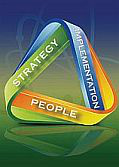Speaker
Michael Whitaker
(ORNL)
Description
Improvements to the current methods used by industry to identify uranium hexafluoride (UF6) cylinders would benefit International Atomic Energy Agency (IAEA) safeguards, inspectorates, and regulatory authorities, as well as facility operators. A move towards a standardized UF6 cylinder identifier is gaining momentum within industry. A National Nuclear Security Administration (NNSA) team has analyzed how a cylinder identification and monitoring system could be useful to IAEA safeguards and has also engaged industry stakeholders to seek feedback on concepts related to unique cylinder identification and monitoring. The IAEA supported a feasibility test that would demonstrate a practicable, cost-efficient approach to uniquely identifying cylinders for safeguards purposes. During a UF6 cylinder stakeholders meeting hosted by NNSA in April 2014, the IAEA shared ideas on how a unique cylinder identifier used throughout industry could be most valuable and could offer safeguards benefits. A unique cylinder identifier, when combined with sufficient tamper-proofing and authentication, could provide greater functionality for the IAEA and create new opportunities to increase the efficiency and effectiveness of safeguards measures applied at facilities at the front end of the nuclear fuel cycle. This paper explores the various benefits that a unique cylinder identifier could provide to the IAEA and potentially other inspectorates. While industry initiative is central to developing a system for identifying UF6 cylinders, the IAEA has been monitoring the maturation of identification/tracking technologies in support of possible safeguards use.1 An industry working group has recently been formed to establish an industry-wide identification format for uniquely identifying UF6 cylinders and to investigate methods of making the unique identifier machine readable (e.g., barcode) and independently verifiable by the IAEA. Increasing benefits can be incrementally realized as implementation of the unique identifier spreads across industry and capabilities to use it are tested, proven, accepted, and implemented.
| Country or International Organization | USA, IAEA |
|---|
Author
Michael Whitaker
(ORNL)
Co-authors
Edward Wonder
(QinetiQ NA)
Karyn Durbin
(NNSA)
Michael Farnitano
(IAEA)
Olli Heinonen
(Harvard University)
bernard wishard
(iaea)

